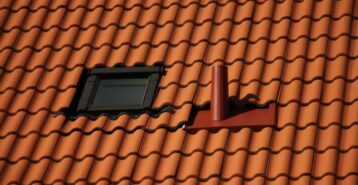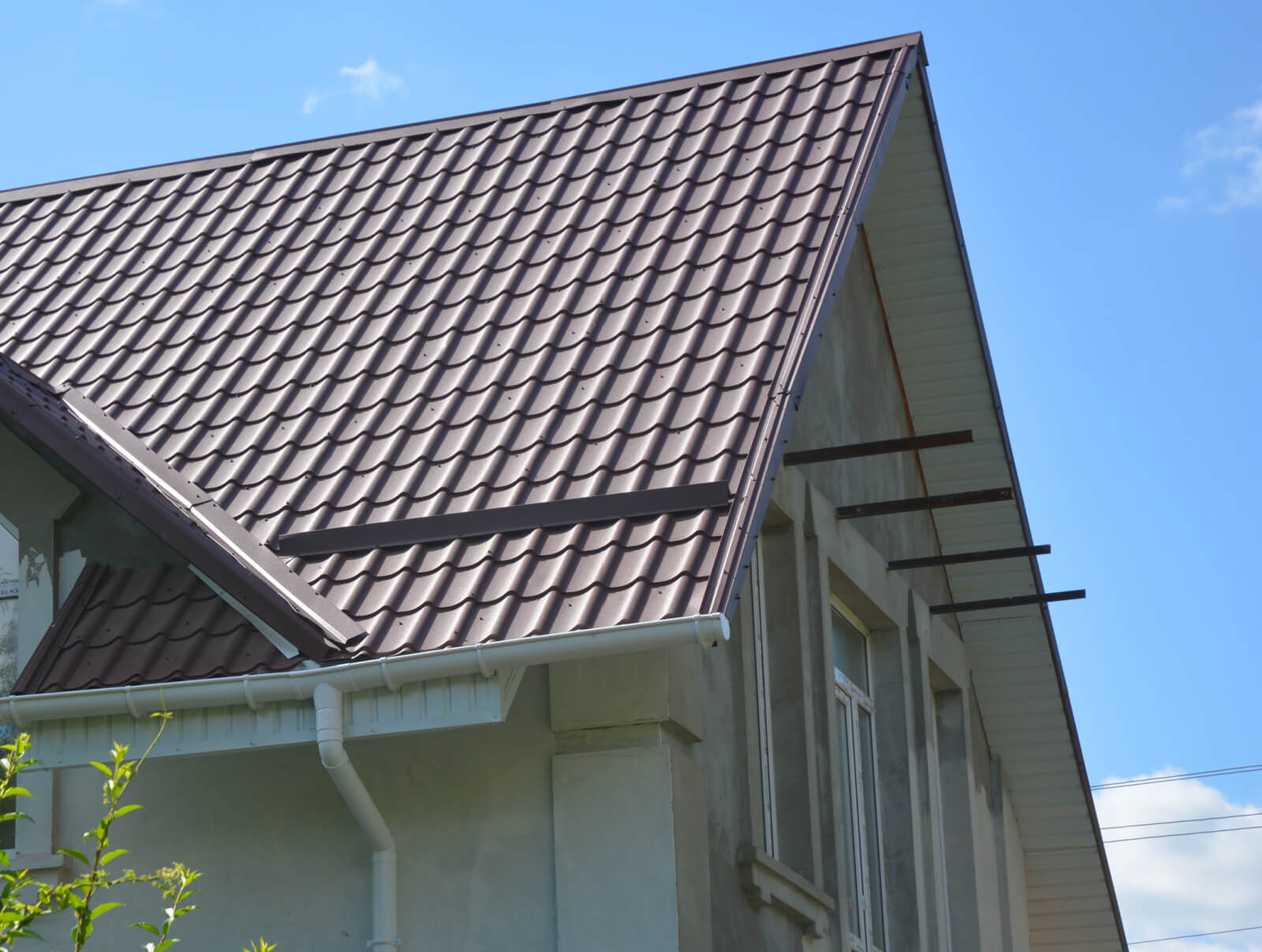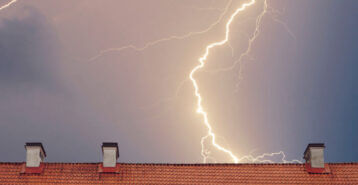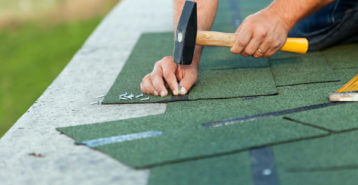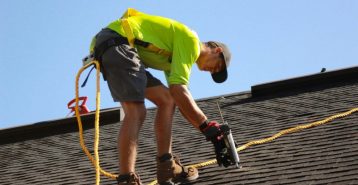Roof Types Buying Guide
Let’s talk roofs. When you hear the words “roof type,” you probably think one of two things: roof shape/frame type (such as gable or hip) or roof style (such as shingles or standing seam metal). If you clicked on this article to learn about one of these, you’re in luck — we’re going to talk about both.
Looking for roof shapes? That section is up next.
Looking for roof styles? Click here to jump to that section.
Common Roof Shapes
These are the most widely used roof styles in residential construction. They’re practical, visually appealing, and perform well in a range of climates and home designs.
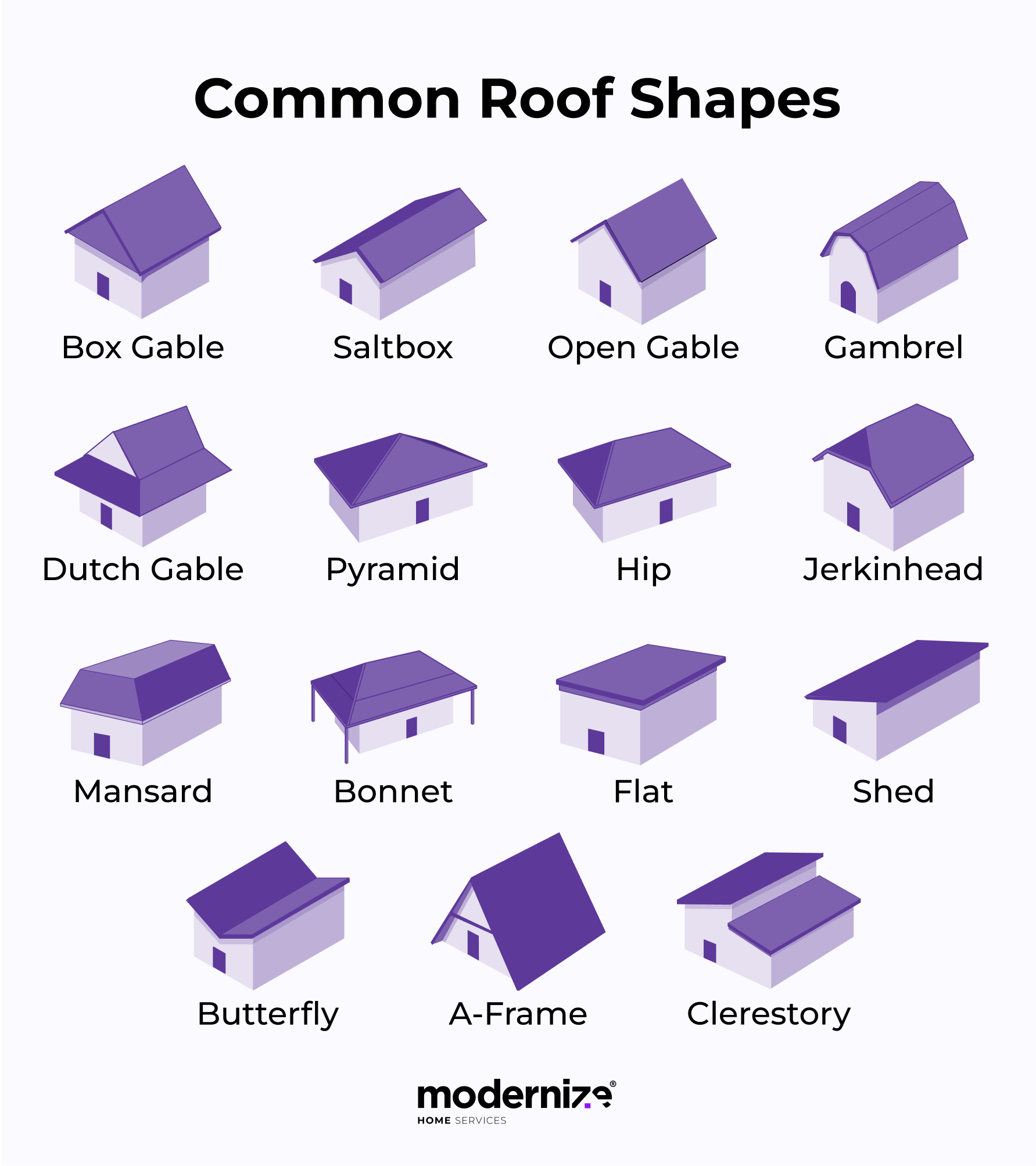
The most common roof shapes can be broken into a few categories:
- Gable
- Hip
- Skillion
- Other
Gable Roof Styles
Gable roofs are easily identified by their triangular shape and two sloping sides. They’re ideal for ventilation and shedding rain or snow, making them popular in many architectural styles.
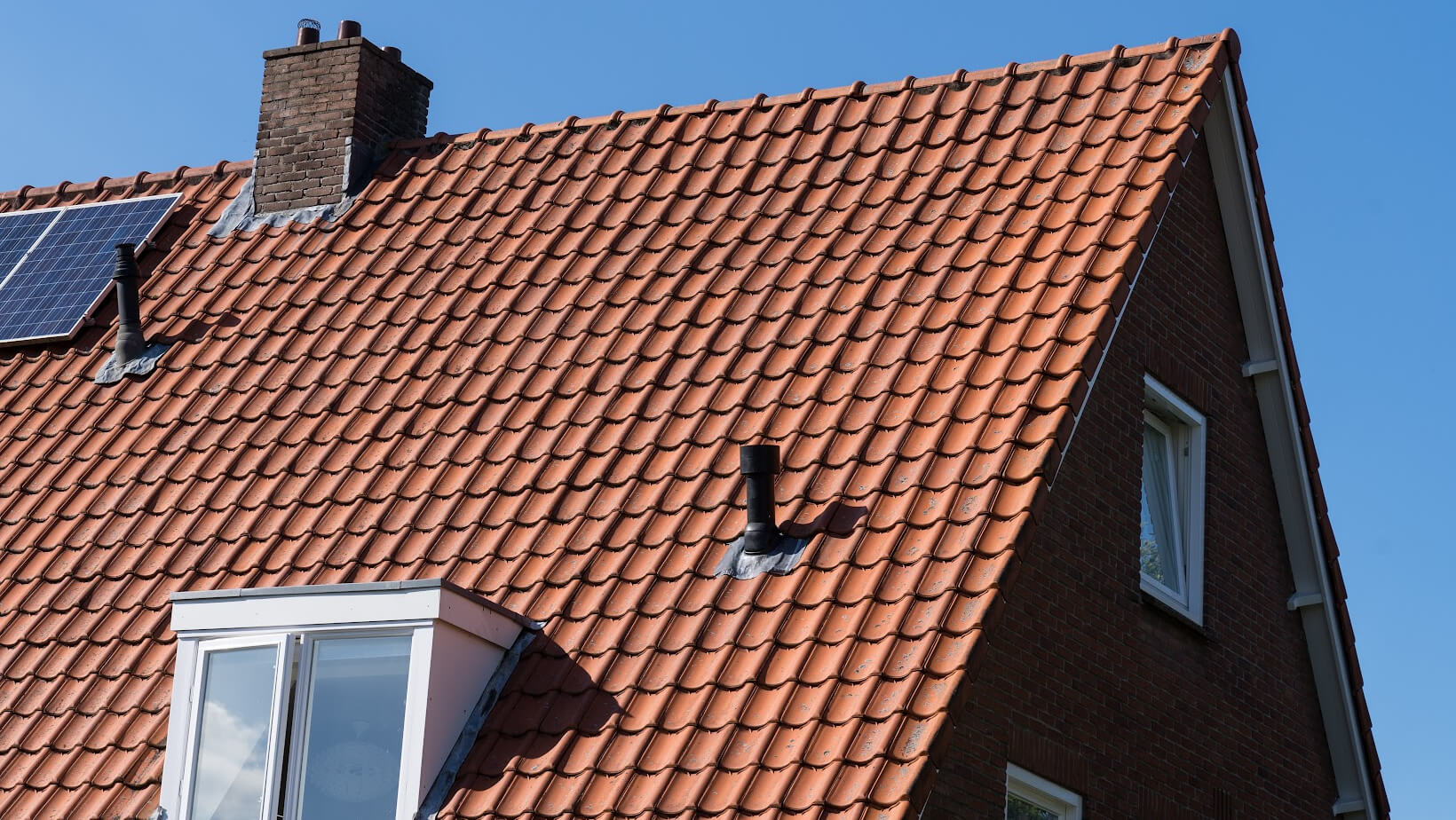
Gable roof styles include:
- Open Gable: A classic two-sided roof that forms a triangle. It’s simple, cost-effective, and great for rain and snow runoff. Common in many home styles, gable roofs also provide space for attics or vaulted ceilings.
- Box Gable: This style builds on the classic gable by enclosing the ends with a box shape. It adds definition and a finished appearance while maintaining the same solid drainage and structural benefits of a regular gable.
- Saltbox: A saltbox roof features two uneven slopes, with one side longer than the other. It’s a smart design for shedding snow and rain, and provides extra living space on one side of the home.
- Dutch Gable: A Dutch gable blends a traditional gable with a hip roof base. This design adds upper-level space and visual interest while improving wind resistance compared to a standard gable.
- Gambrel: Commonly seen on barns and colonial homes, gambrel roofs have two slopes per side. The steep lower slope creates spacious interiors for attics or lofts, while the upper slope keeps the structure balanced and sturdy.
- Jerkinhead: Also called a clipped gable, a jerkinhead roof looks like a gable with the peak chopped off. This design softens the gable’s point while improving wind resistance and adding a touch of elegance.
Hip Roof Styles
Hip roofs slope down on all four sides, making them strong, balanced, and ideal for wind- and snow-prone areas. They also provide a clean, uniform look from every angle.
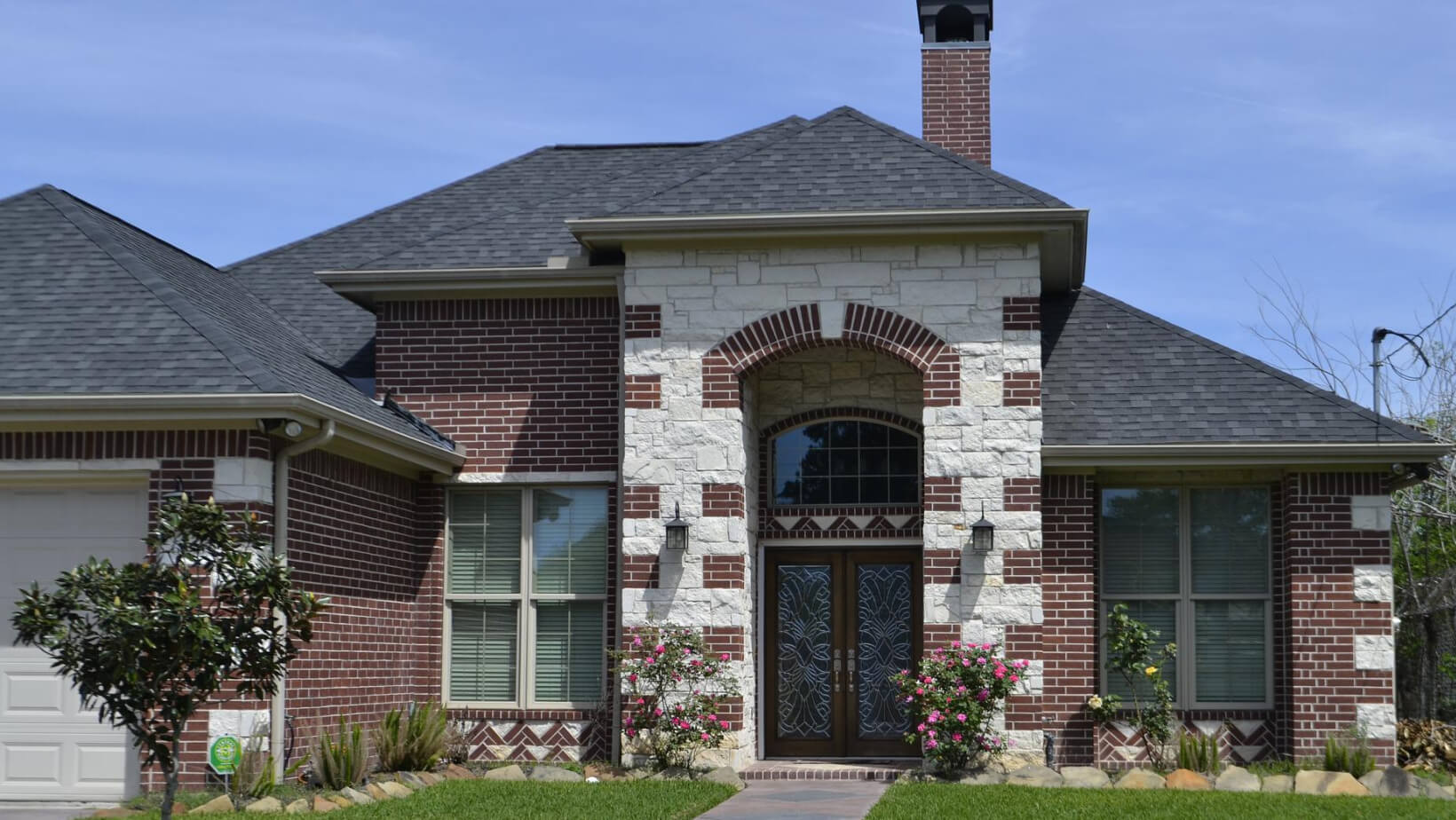
Common varieties of hip roofs include:
- Standard Hip: A regular hip roof has four sloped sides that meet at a ridge. It’s very stable, making it a great option for areas with high winds or snow. Plus, it offers a neat, symmetrical appearance.
- Pyramid Hip: All four sides of a pyramid hip roof are equal in length and meet at a single point. It’s ideal for square-shaped homes, offering balance, strength, and a compact, low-profile look.
- Mansard: Mansard roofs have two slopes on each of their four sides, with the lower slope steeper than the upper. This creates a full upper story and adds a touch of French-inspired sophistication to your home.
- Bonnet: Bonnet roofs feature a double slope on all sides, with the lower slope flaring outward. Often seen on southern or French colonial homes, they provide extra shade for porches or windows and a soft, elegant look.
Skillion Roof Styles
Skillion roofs are made up of a single, steeply sloped surface. They’re especially popular in contemporary designs and additions where simplicity and drainage are top priorities.
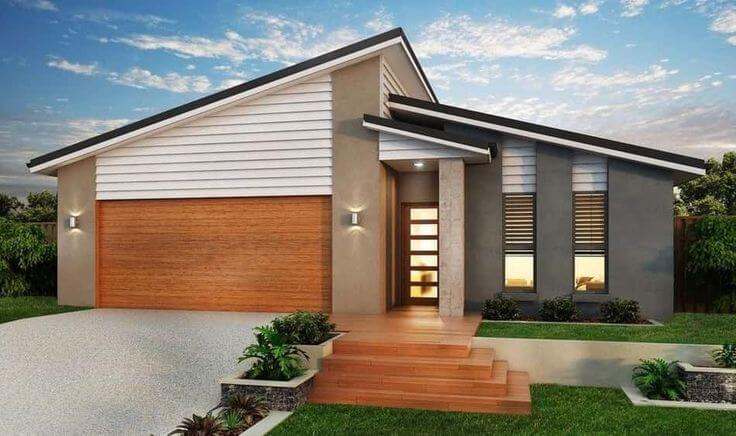
Popular skillion roof styles include:
- Shed: Shed roofs are a form of skillion roof usually used on smaller sections like porches or additions. They offer good water runoff and natural light, and work well with sleek, contemporary designs.
- Butterfly: Butterfly roofs slope inward toward a central valley, resembling wings in flight. They’re stylish and eco-friendly, often used in modern homes for collecting rainwater and maximizing natural light.
- Clerestory: Clerestory roofs feature a vertical window section between two roof levels. They’re a popular choice for bringing sunlight into deep interior spaces without sacrificing wall space or privacy.
Other Common Roofs
These roof types don’t fit neatly into gable, hip, or skillion categories, but they’re commonly used thanks to their distinctive forms and practical benefits.
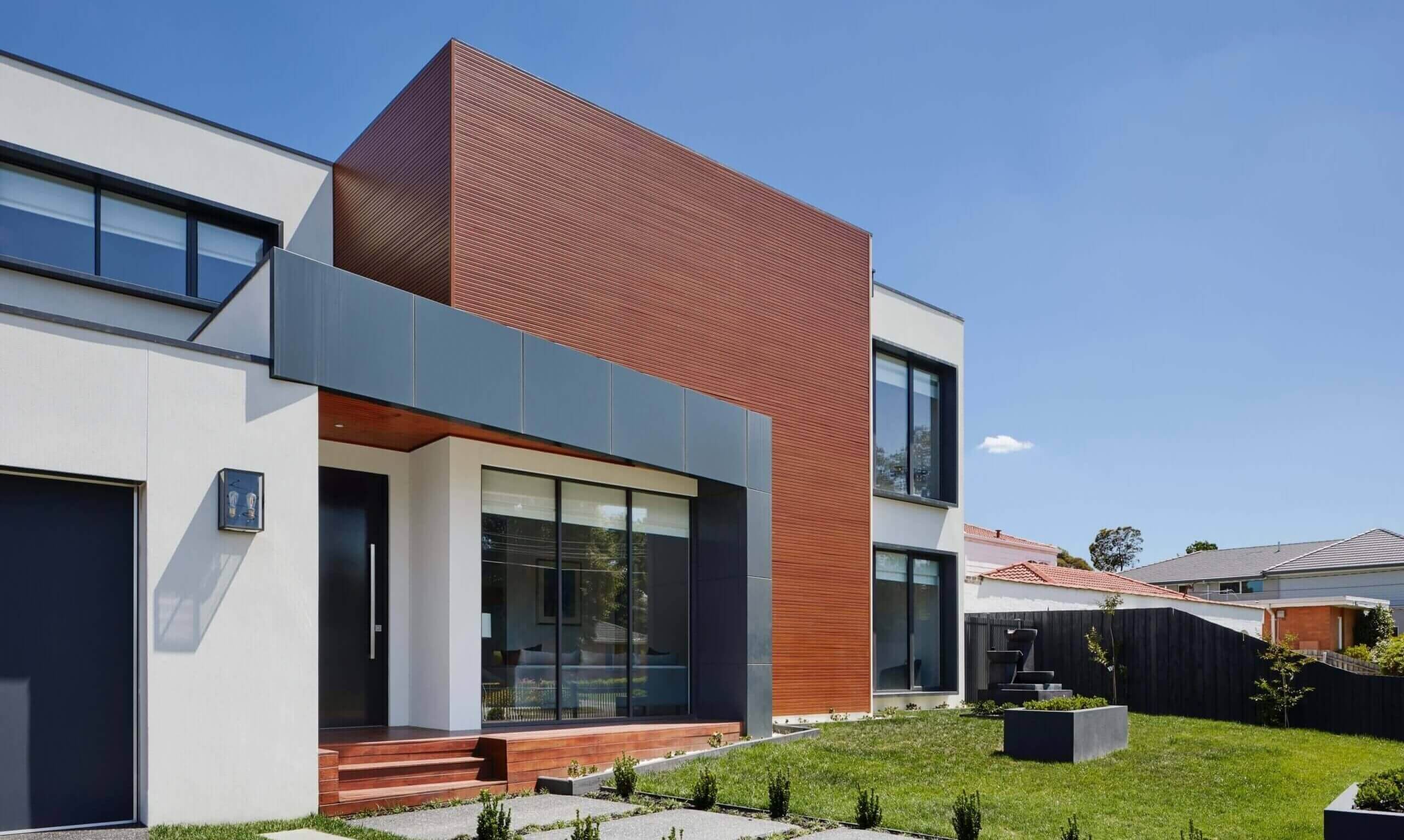
Some other common roof styles include:
- Flat: Flat roofs have a nearly level surface with a slight pitch for drainage. They’re popular in modern architecture and can support rooftop decks, gardens, or solar panels, making the most of limited vertical space.
- A-Frame: A-frame roofs slope steeply down to the foundation, forming a triangle. Popular in snowy or wooded areas, they help snow slide off easily and create tall, open interior spaces in smaller homes or cabins.
Roof Styles
The style of your roof affects not just your home’s appearance, but also how well it performs in different climates. These are some common roof styles:
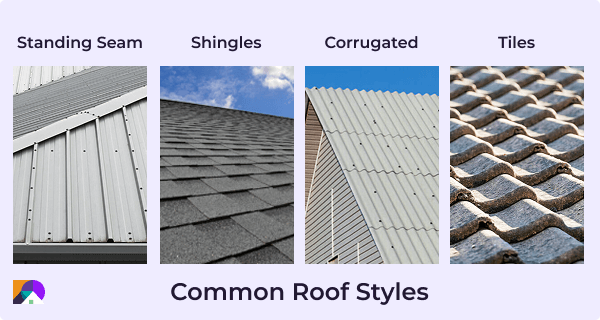
Standing Seam Metal
Standing seam metal roofs are sleek and modern, made from long metal panels that interlock. They’re incredibly durable and low maintenance, and they can last for decades with minimal upkeep.
Shingles
Shingles are laid in overlapping rows from the bottom of the roof to the top. They come in a wide variety of materials, colors, and shapes, so it’s easy to match them to your style and budget.
Corrugated
Corrugated roofs have a ridged, wavy pattern that adds strength and keeps things lightweight. These roofs are often made of metal and are easy to install, making them a practical option for both homes and outbuildings.
Tiles
Roofing tiles are heavier than shingles and usually made from materials like clay, concrete, or slate. They’re known for their durability, but they require professional installation and a solid support structure.
Common Roofing Materials
From budget-friendly to built-to-last, here’s a breakdown of the most popular roofing materials and what you can expect from each one.
- Metal: Lightweight, durable, and eco-friendly, metal roofs (like steel, aluminum, or copper) can last 50 to 80 years or more.
- Asphalt: A popular choice due to its affordability and ease of installation. Asphalt shingles typically last 20 to 30 years.
- Wood: Wood roofs offer a natural look and are usually made from cedar. With care, they can last 20 to 25 years.
- Clay: Clay tiles have a bold, Mediterranean look and can last up to 100 years. Just make sure your home can support the weight.
- Rubber: Made from recycled materials, rubber roofs are low maintenance and last between 15 and 25 years.
- Foam: Foam roofing is seamless and great for insulation. It can last over 50 years, but requires occasional re-coating.
- Slate: Slate is durable, attractive, and long-lasting — up to 150 years. However, it’s heavy and more expensive.
- Tar and Gravel: Ideal for flat roofs, this layered system lasts around 20 years with regular maintenance.
- Solar: Solar shingles generate electricity and work best on sunny roof sections. They last around 20 to 25 years.
- Green: These roofs are topped with live plants and help insulate your home, while also absorbing pollutants.
Roof Components
Every roof is made up of several layers that work together to protect your home. Here’s a quick breakdown:
- Underlayment: Sits between the roof deck and outer layer to help block water, wind, and heat.
- Deck: The wooden base that supports all roofing materials and holds everything in place.
- Ventilation: Moves air through your attic to manage moisture, reduce heat, and extend your roof’s life.
- Insulation: Keeps your home comfortable year-round and helps lower your energy bills.
- Flashing: Metal seals placed around edges and joints to keep water out of vulnerable areas.
- Roof Material: The visible layer, like shingles or tiles, that protects your home from the elements.
Tips to Maintain Your Roof
Taking care of your roof helps you avoid costly repairs and extend its lifespan. Here’s what to stay on top of:
- Inspect your roof twice a year and after big storms.
- Clean out your gutters regularly to keep water draining properly.
- Remove debris like branches or leaves that could trap moisture.
- Check flashing for cracks or loose areas that could cause leaks.
- Trim tree branches that hang over your roof to prevent damage.
Hiring a Quality Roofer
Even the best roofing material won’t perform well if it’s not installed properly. A poor installation can lead to leaks, repairs, and a shorter roof life. That’s why it’s worth hiring a licensed roofer with solid experience, especially for specialty materials like metal or slate. Always ask for references, check reviews, and compare quotes to find the right fit for your project.
We can connect you with up to four local contractors so you can get quotes and start your roofing project. Click below to get started.
